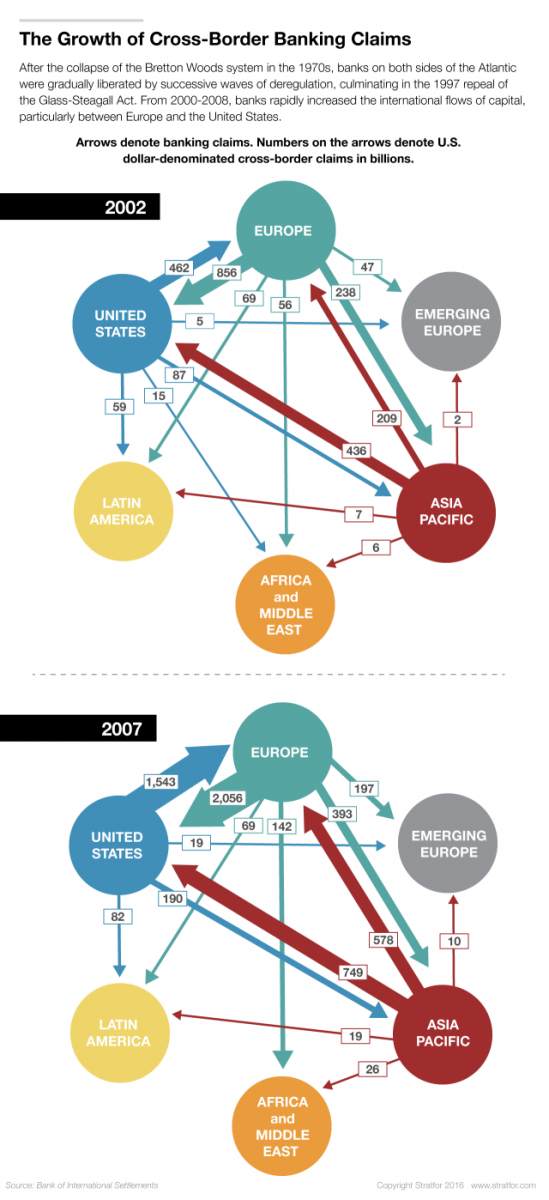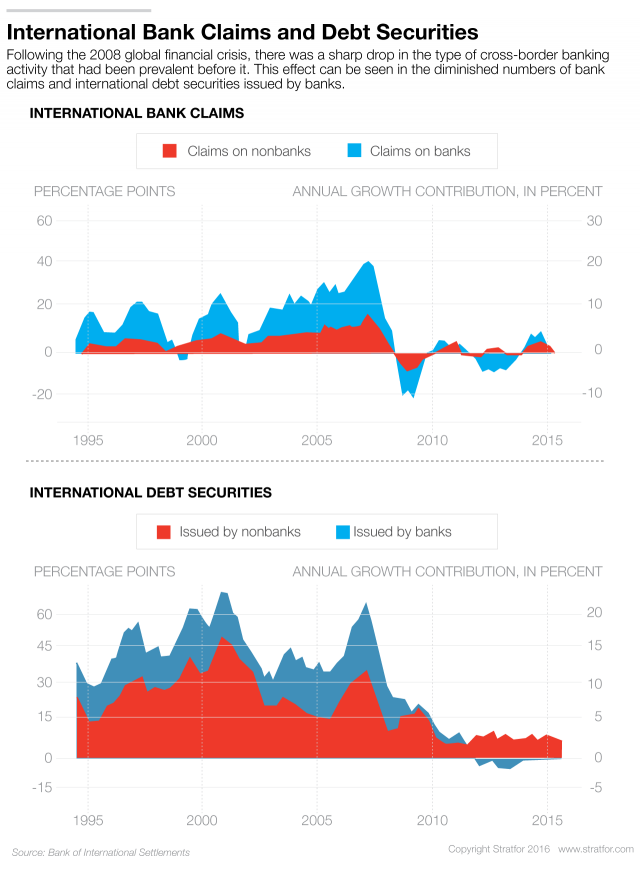Analysis
After the devastating US stock market crash of 1929, the United States introduced the Glass-Steagall Act in 1933 to prevent it from ever happening again. The law separated the activities of retail and investment banks, drawing a hard line between customer deposits and speculative trading activity in the markets. This separation, coupled with the constraints imposed by the Bretton Woods system that emerged after World War II, resulted in a long period uninterrupted by major financial shocks.
Read Interview with OECD's William White on the Negative Side Effects of Ultra-Easy Money
But international flows of capital loosened once again in the 1970s with the end of the Bretton Woods system. The creation of the eurodollar market in London in the 1960s also helped remove constraints on capital movement, increasing cross-Atlantic money flows and transforming London into an important financial hub. Since then, the financial cycle has become more pronounced in the United States, with higher highs and lower lows.
In the 1980s, the London financial sector was rapidly deregulated in what came to be known as the Big Bang, and in 1997 the Glass-Steagall Act was repealed in the United States. Though the hard boundaries between retail and investment banks had been steadily weakening, this was a direct attempt to dismantle the institutions and regulations separating the two. Speculative capital flows, particularly between the US and European investment banks, rapidly increased, creating a bubble based on inflated prices. When the bubble burst, loans that had been made on the basis of inflated asset prices suddenly became worthless, and banks found themselves in danger of insolvency.
Governments, which had had little choice but to use public money to bail out various financial and non-financial institutions, once again moved to enact regulations that would prevent a repeat. The Dodd-Frank Act, which came into force in the United States in 2010, once again imposed limits on bank activities. In addition, a campaign of fines has been levied upon large banks on both sides of the Atlantic. The recent tumult at Deutsche Bank was triggered by the proposed imposition of a billion fine by the US Department of Justice.
On top of the fines, banks are now required to keep a much higher proportion of their capital in reserve for a rainy day. As a result, this capital cannot be put to work generating extra profit, which reduces the banks' ultimate returns.
The crisis has also led to a large increase in public debt, as economies have absorbed the private debt that was taken on in the boom years. Meanwhile, as debt has risen, interest rates have fallen — in the European Union and Japan (and possibly soon the United Kingdom) to below zero. This has further decreased the profitability of banks since they are unable to charge high interest rates.
Read also The Global Economy Is Collapsing
In essence, banks have gone from being highly profitable drivers of the economy to battered and bruised institutions pressured from every direction. Low profits are reflected in bank share prices: Investors now price European banks at below the value of their assets. The troubling outlook for banks compared to nonfinancial corporations is most evident in the United States, where financial institutions have not benefited as much from the recovery in stock prices as nonfinancial institutions have.
When it comes to fines, the worst is probably over for banks. Increased regulation and low interest rates, however, will continue to burden the institutions. Therefore, banks should be seen as being at the start of a multidecade cycle, which last began with the stock market crash in 1929 and the enactment of the Glass-Steagall Act soon after.
"The Global Banking Cycle: A Visual Guide" is republished with permission of Stratfor.













